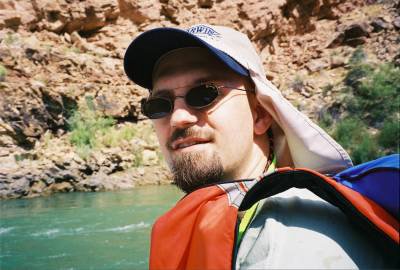Where did all that material go?
The Grand Canyon is 277 miles long, 4 to 18 miles wide, and at least a mile deep. Some 900 cubic miles of space could fit inside the canyon. Yet we do not find 900 cubic miles of sediment in the delta of the Colorado River where it empties in the Gulf of California. Where did all that eroded material go?
The creationist explanation is that the material was washed out to the deep sea when the cataclysmic "breached dam" burst forth as the waters from Noah's Flood were receding. But there is another explanation which fits far better. The missing material was moved away by tectonic activity.
But first, let's overview some things. There already is a large amount of sedimentary material in the Gulf of California from the Colorado River. Also, most of the rock in the Grand Canyon is composed of limestone, dolomite, or or shale, which are materials which erode by being dissolved in the water and not precipitating out into a river delta. Still, despite these factors, there should be a lot more sediment where the Colorado empties out. Where did it all go? Why, it's San Andreas' fault as to where it went!
The San Andreas Fault runs along Mexico's western border, goes up through Baja, and into southern California. It is sliding to the northwest at a steady rate of a couple inches per year. And (get this) it runs directly beneath the Colorado River's delta in the Bay of California! That's right, as sediment gets dumped into the bay, the San Andreas Fault is carrying the sediment to the northwest. It's very much like someone dumping sand onto a moving conveyor belt. If one examines the land to the Northwest of the Colorado's river delta, one sees that the sediments have indeed been deposited along the moving faultline in the past, and today much of the landmass of Baja and other parts of Southeastern California are comprised of that sediment.
Which begs the question: If the Noah's flood model is true, why is there such convincing evidence of slow, million-year tectonic activity found in the Colorado River sediments?
Answer: Because the flood model is wrong.
Eric


0 Comments:
Post a Comment
<< Home